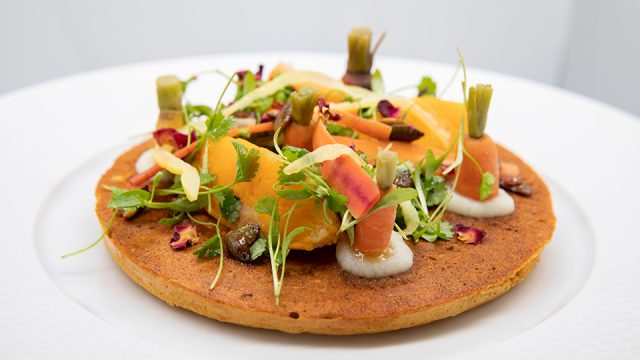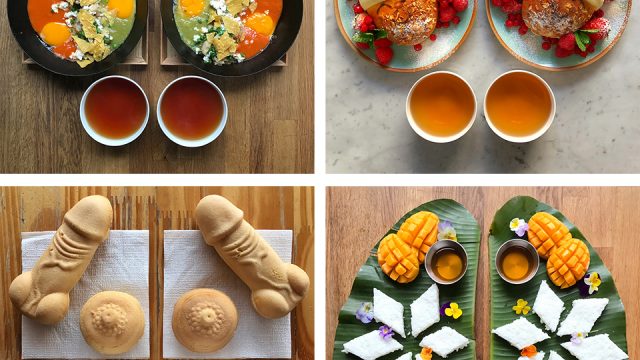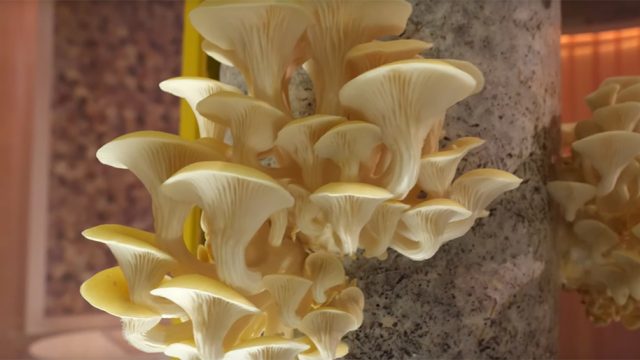Belfast-born, London-based artist Laura Wilson has long been fascinated by that most everyday of materials, bread. Her work engages with the complex history and symbolism of bread in our lives and world, as well as getting right up close, examining the physical and scientific properties of dough, especially in relation to the human bodies that create and manipulate it.
Her ongoing project Trained on Veda seeks to push back against the standardisation of industrial bread production and revitalise a historic bread product through a network of bakeries and galleries. It is currently on display in the exhibition FOOD: Bigger than the Plate at the V&A South Kensington, where she will also be performing a new work, Holding Shift at this month’s food-themed Friday Late.
What is Veda bread?
I still remember when I had my first slice of Veda. The soft, brown malted bread was toasted and dripping with butter. I was about 11 years old and ate most of the loaf. Veda bread is unique to Northern Ireland and the bread is inextricably linked with the place for me personally. That first taste was the same day I was taken on a visit to Harland and Wolff Dockyard, and saw Belfast’s famous cranes up close.
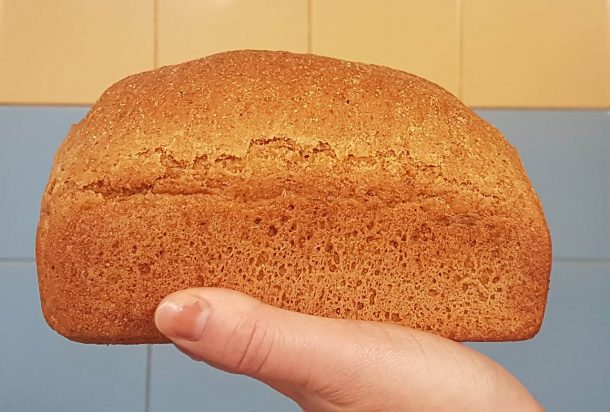
Veda bread was discovered by accident in the early 1900s when a Scottish maltster called Robert Graham made bread with sprouted wheat. This produced a loaf with a beautiful malted taste, which was easily digestible, full of vitamins and had a long shelf-life (five to seven days). It became popular in the early 20th century and bakeries selling the bread opened in most cities across the UK. During the First World War it was known as ‘the soldier’s friend’ as it was the only bread which would reach the trenches fresh. But by the end of the Second World War, Veda was superseded by the white loaf – though not as nutritious, it could be produced quickly, more cheaply and in larger quantities. For reasons unknown, today Veda bread is only produced in Northern Ireland.
How did the Trained on Veda project start?
I started thinking about Veda in 2013 whilst researching for another art project. Veda was allegedly made to a ‘secret’ recipe, but I wanted to find out how secret it really was. I started googling and discovered the ‘secret’ recipes were in the hands of James Kerr from Aberlady in Scotland, so I jumped on a train with the view to perhaps making a film about it. James Kerr worked at a maltings that used to make the raw ingredients for Veda bread, and is very knowledgeable about the whole malting process. Over the next few years we kept in touch.
In 2016 I began a residency at Delfina Foundation in London to develop the Trained on Veda project. The title comes from an old photograph which James Kerr showed me when we first met, featuring the founder of Veda, Robert Graham, with the championship long-distance runner C.W. Hart, wearing an advertisement for the bread on his jersey.
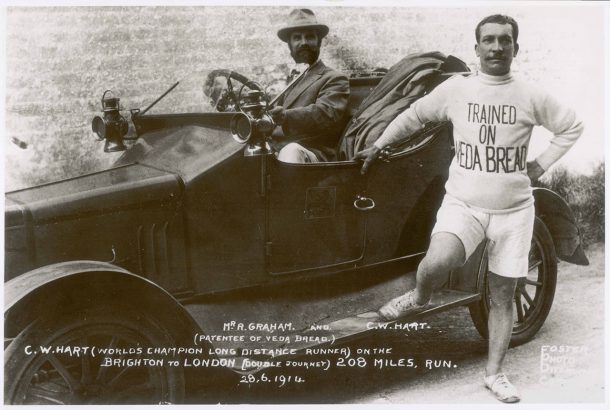
On 30 August 2016 I purchased the dormant company, Veda Bakeries Ltd along with the archive of the early history of Veda bread, from James Kerr. My hope in doing this was to revisit the history of the bread and test out recipes to ultimately produce a malted loaf inspired by this research and distribute it to a network of bakeries and galleries across mainland UK.
What do you hope to achieve with the project?
Bread as a material and subject matter has such rich, varied historic and cultural significance. I want to explore how knowledge is passed on through embodied practice, and pose questions around labour, regaining lost skills, and the link between food and wellbeing. By enabling people to taste the bread, and organising events and exhibitions, I can share this research and encourage conversations around diet, food politics, and the impact that economics and industrialisation have on our health.
Do you collaborate with bakers to produce the bread?
I’m interested in the transferal of trades, and practical knowledge. I often develop my work though collaborating with people across disciplines. In the past few years, I’ve worked with scientists, brick-makers, actors, choreographers, architects and bakers. Through Trained on Veda, I’ve been working with the baker Marc Darvell who runs a six-generation family bakery in Chesham, Buckinghamshire. Together we revisited the original Veda bread recipes and developed a new recipe inspired by my historical research and enriched by his amazing baking knowledge and skill.
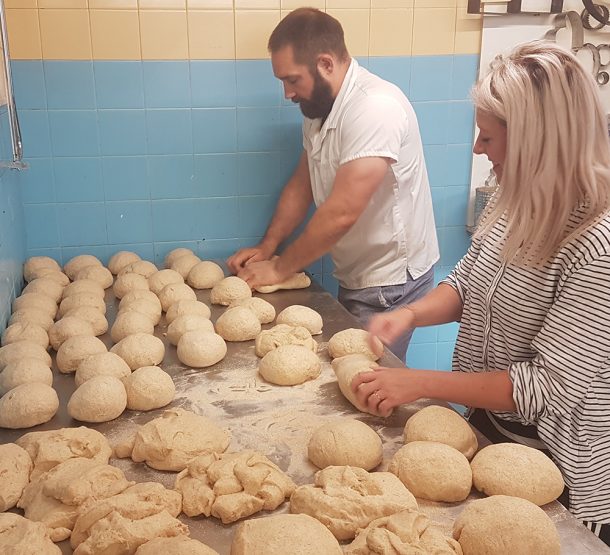
I learnt how to bake through my residency at Site Gallery in 2016 where I worked with Martha Brown, a baker in Sheffield and Lucy Suggate a Choreographer, to develop Fold and Stretch – a performance inspired by how your body moves when you bake bread. By taking part in bakeshifts over the course of a month, I observed the movements of the bakery, in order to really get to know the ingredients, to understand the bakers’ craft and familiarise myself with dough. I then worked with Lucy back in the gallery to incorporate these movements into the final performance work.
Tell us more about the performance aspect of your work. How does it relate to the theme of embodied knowledge?
Over the last few years I’ve learnt a lot about dough as a material. It is quite temperamental, changing its character depending on the weather or who’s working with it. It refuses to behave and resists when you try to make it hold its shape! I have developed this knowledge through working with the bakers and by using dough in my performances.
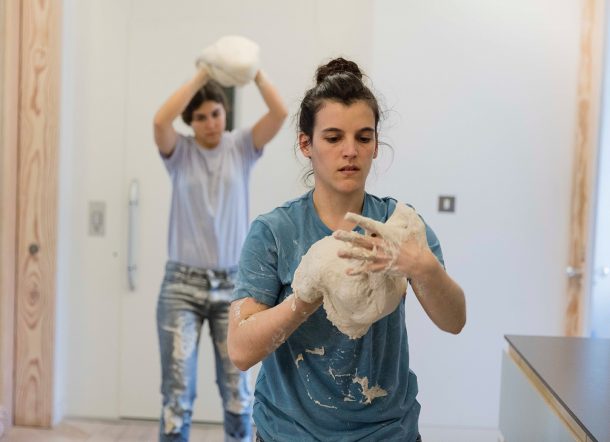
In performance, the dough becomes another body moving in duo with the performers, it leads the choreography, the pace and direction. The dough becomes more active and alive through contact with the natural yeasts in the air and the human body, constantly shape-shifting, taking on a life of its own. I got to understand more about these yeasts through my work last year with the scientist Philip Zegerman in his Lab at the Gurdon Institute. Together we conducted experiments on yeast cultures, extracting their DNA and observing the movements of cells under the microscope. Interestingly, budding yeast cells behave in a very similar way to humans. They breathe out carbon dioxide, they live in colonies, they are co-dependent, they flirt with each other.
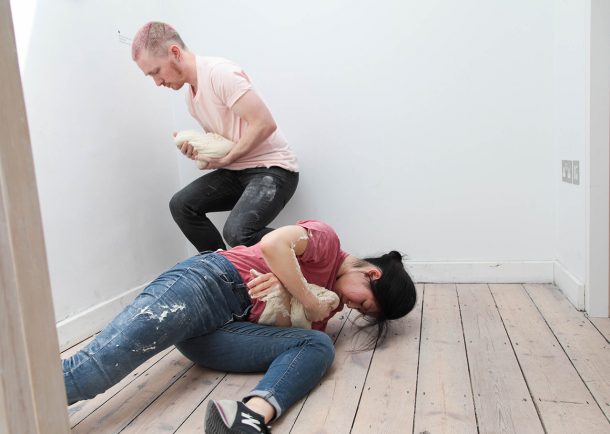
For me, it has been interesting working alongside Marc in his bakery to test out and develop a recipe for Trained on Veda. He has worked in the bakery all his life, having learnt his trade from his dad, he is so sensitive to the timings, the pace of the bread and dough. It’s interesting too because we are going to pass the recipe on to local bakeries around the country and the recipe will probably have to shift/adjust depending on those bakeries and bakers, which is exciting.
What’s the best way to eat Veda bread?
My favourite way to eat it is sliced, toasted with butter and topped with a strong cheddar or a soft poached egg with chives sprinkled on top.
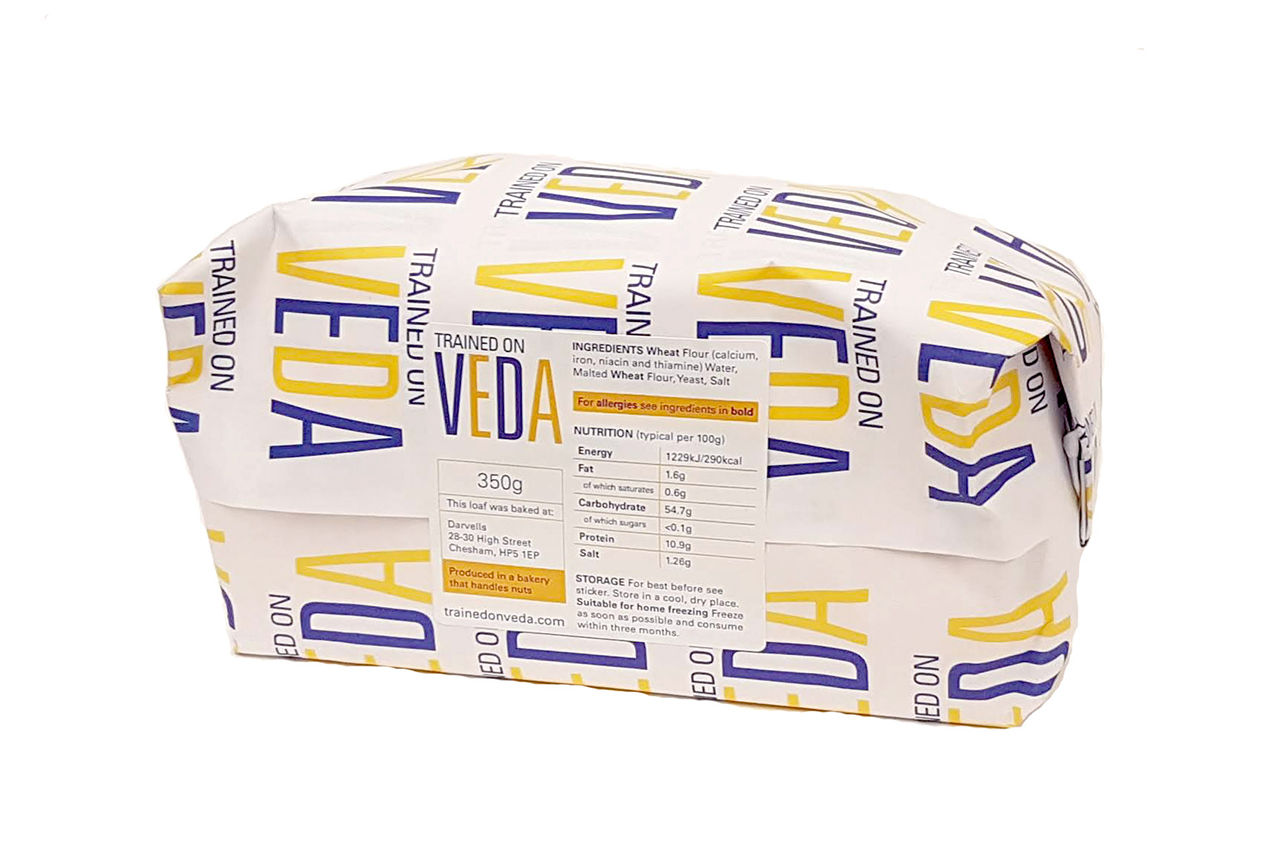
Laura will be performing a new work, Holding Shift, which sees dancers move in a constant flow with a body of dough, at this month’s food-themed Friday Late event at the V&A, South Kensington.
Tickets for the exhibition FOOD: Bigger than the Plate will be available in person, on the night, for the special price of £5, subject to availability. Samples of Veda bread will be available at the Great Exhibition Road Festival, 28 – 30 June.
Find out more about Trained on Veda.
